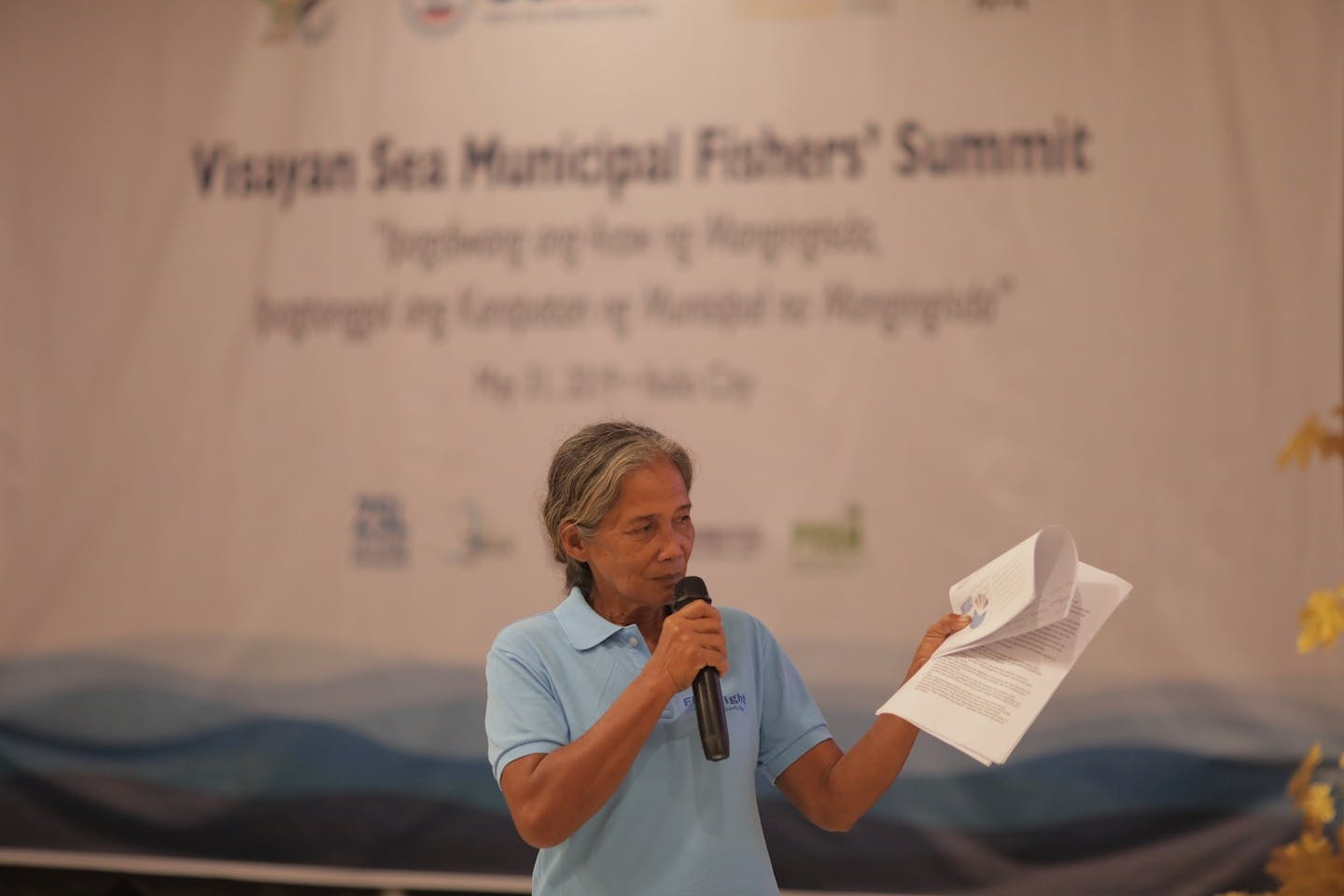Protector of the seas, the Filipino fish wardens
On the shores of an island in Iloilo City, Western Visayas (Philippines), a female resident keeps watch over the marine protected area (MPA) in her village, as she monitors the seas for signs of illegal fishermen. Helen Balajadia, fondly called “Nanay (Mother) Helen” in the Concepcion Municipality, has been a staunch advocate of marine protection for nine years. A fish warden for the local government’s Bantay Dagat (Sea Watch) Task Force, she guards the MPAs against prowling fisherfolk who resort to unlawful practices, such as dynamite fishing, the use of fine mesh nets, or unauthorized active gear such as the Danish seine.
Upon sighting the errant fishermen, the fish wardens explain to them that they cannot conduct operations on the MPA. If they don’t listen, the wardens go on to apprehend them and bring them to their local government unit to face the mayor. “Some of them are really stubborn. Most of them come from big, commercial boats. They are the ones with lots of money, and they can pay the fines [when they are penalized],” Nanay Helen said.
At 62-years old, Nanay Helen has been a symbol of courage for younger trainees in her town Barangay Tambaliza. “We need to protect the seas for our children who grow up to become fisherfolk. If we don’t protect the seas, what will happen? If there are no fish to catch, they won’t have any livelihood,” she explained. “If it weren’t for us, the fish wardens, who guarded the protected area, there wouldn’t be any fish left here,” she said further illustrating the importance of her position.
Combined with the wardens’ constant efforts, the strict policies of the Concepcion mayor against illegal fishing practices has also improved the situation of marine life in the area, said Concepcion Municipal Agricultural Officer (MAO) Billy Morong. “There were many cases of dynamite fishing in the past. Now, the mayor has clamped down on dynamite fishers. Right now, it looks like there are no more of them,” Morong said.
In many ways, illegal fishing — according to Filipino marine biologist Dr. Willy Campos — is a consequence of declining fish productivity. Back in the 1980’s, a fisherman could expect to catch 5 kilos of fish per day. However, the catch has gone down as the years have passed and instead of using non-destructive gear like ‘hooks and rifles’, those with low catch would resort to using fine mesh nets.
“[The fishermen will] use nets with smaller mesh sizes, which are illegal because they catch juvenile [fishes]…. With too much fishing, you're actually catching fish faster than they grow,” he explained.
Similar to the concerted efforts of the Bantay Dagat Task Force and Iloilo local government in protecting marine life, there is a new initiative that seeks to preserve fifty percent of the world’s biodiversity through mapping a “Global Safety Net.” The GSN aims to use advanced computer modelling in “examining the world’s habitable land area, and identifying places based on the number of rare species, high biodiversity count, and large mammal landscapes, among others.”
The Philippines, an archipelago nation, is home to two-thirds of the world’s flora and fauna. It is one of the 18 mega-biodiverse countries in the world and is included in the Global Safety Net initiative. When viewed through the website’s open source app, the country is mostly colored in pink, which means that it has a high number of rare species sites. Nanay Helen and many other local fish wardens are committed to protecting those areas near the water and the biodiversity that lives there.



